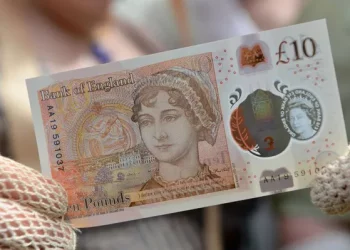The U.S. dollar steadied on Wednesday, back near last week’s close after a day of losses and then of gains, while the Australian dollar rose on the chance of interest rate hikes after surprisingly strong inflation data.
The dollar index, which measures the U.S. currency against a basket of six peers, was steady at 106.3, having dropped 0.55% on Monday when the relentless recent rise in U.S. yields paused.
It then climbed 0.62% on Tuesday, after S&P Global’s flash U.S. Composite Purchasing Managers Index rose to its highest level since July, potentially giving the U.S. Federal Reserve more room to keep interest rates high.
The euro was last at $1.0596 and the pound at $1.2163 both flat on the day, having been the main beneficiaries and then victims of the dollar’s swings.
The bigger mover of the day was the Aussie dollar, which gained as much as 0.7% to touch a roughly two-week high of $0.6400 after data showed Australia’s consumer price index rose 1.2% in the third quarter, above market forecasts for 1.1% and up from a 0.8% increase the previous quarter. [AUD/]
That left traders narrowing the odds on a possible rate increase by the Reserve Bank of Australia (RBA) next month, which would come after four rate pauses.
“The interesting thing about Australia is that a lot of other central banks are in a very similar position. They have paused, the market’s hoping that will be it, but everyone is on tenterhooks hoping that inflation will remain well behaved, and in the case of Australia it has not,” said Jane Foley, head of FX strategy at Rabobank.
She said tight labour markets and high oil prices were underpinning fears that inflation could be sticky.
The buoyant U.S. dollar kept the yen pinned near the closely watched 150 threshold, with the Japanese currency last at 149.9 per dollar, keeping traders on their toes for any signs of intervention by Japanese authorities.
Pressure is mounting on the Bank of Japan to change its bond yield control as global interest rates rise. A hike to an existing yield cap set just three months ago is being discussed as a possibility in the run up to next week’s policy meeting, Reuters cited sources as saying earlier this week.
“There is a decent chance there will be a another tweak to yield curve control … If we don’t see that it is quite possible that we will see the other side of 150 quite soon,” said Foley.
Market participants fear that Japanese authorities will step in to support the currency has meant the dollar’s brief recent moves past 150 have not been sustained.
In cryptocurrencies, Bitcoin was last down a touch at $33,863, holding near a roughly 18-month high hit on Tuesday.
The world’s largest cryptocurrency has been on a tear this week, having surged 10% on Monday, fuelled by speculation that an exchange-traded bitcoin fund is imminent.




























